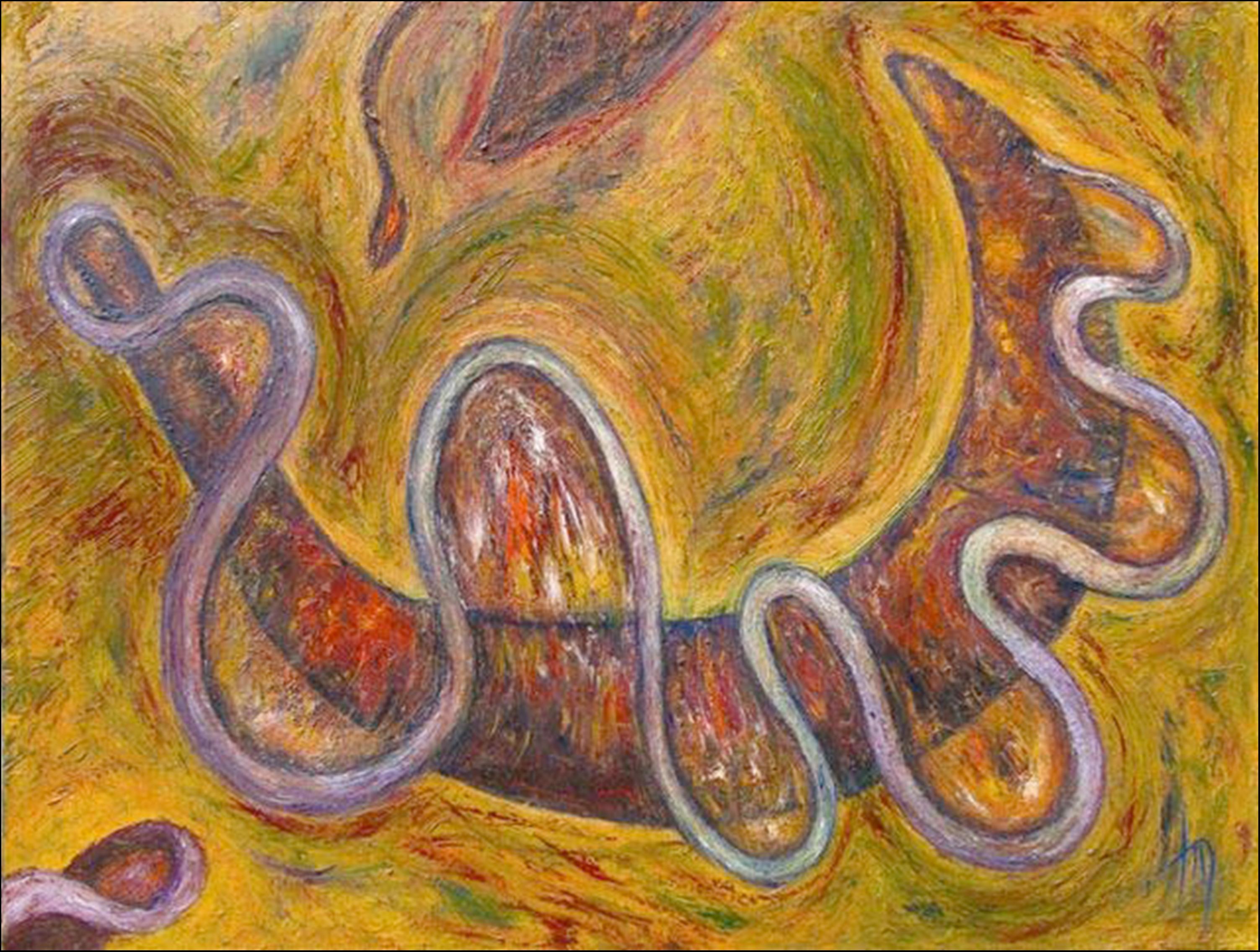The well-known Argentine painter and artist, Nestor Favre-Mossier today donated two of his famous paintings to the World Health Organization (WHO) as part of his commitment to raising awareness about neglected tropical diseases (NTDs), particularly Chagas disease which affects millions of mainly poor people in Argentina and in other countries of the Americas.
"This artwork calls for reflection about a preventable disease that ruins the lives of people and welfare of families" said Dr Anne Marie Worning, Executive Director, WHO Director-General's Office, who received the artworks in the presence of Dr Lorenzo Savioli, Director of the Department of Control of Neglected Tropical Diseases.

The two paintings - 'Donde Como' (Where How) and 'Mala Sangre' (Bad Blood) - visually communicate Mr Favre-Mossier's message about Chagas disease which crossed his life on several occasions, making him particularly sensitive to the sufferings of people. It has been more than 100 years since the disease was first discovered by and named after Carlos Ribeiro Justiniano Chagas, a Brazilian physician. What has most affected Mr Favre-Mossier is the fact that despite having been known for over 100 years, this disease has remained hidden and its victims suffer in silence, without having the opportunity to voice out their feelings and rights.
Between 2008 and 2009, Mr Nestor Favre-Mossier visited and lived with people of the Chaco region which borders northern Argentina, where his family comes from. This visit inspired a series of 14 paintings on Chagas disease, two of which now donated to WHO.
Chagas disease, also known as American trypanosomiasis, is a potentially life-threatening illness caused by the protozoan parasite, Trypanosoma cruzi (T. cruzi). It is found mainly in Latin America, where it is mostly transmitted to humans by the faeces of triatomine bugs, known as 'kissing bugs' , among other names, depending on the geographical area.
An estimated 10 million people are infected worldwide, mostly in Latin America where Chagas disease is endemic. More than 25 million people are at risk of the disease. It is estimated that in 2008 Chagas disease killed more than 10 000 people.
